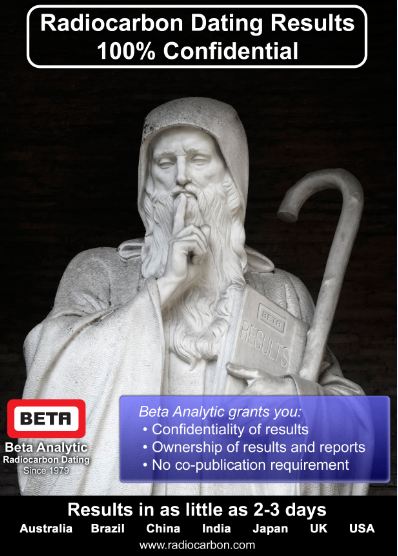Beta Analytic Supports 39th Alaska Anthropological Association Conference
Sunday, March 4th, 2012
Beta Analytic provided support to the Alaska Anthropological Association (AAA) by co-sponsoring its 39th annual conference held at Hotel Deca in Seattle, Washington, from February 29 to March 3, 2012. The conference theme was “Northern People and Landscapes in Times of Change.” The ISO/IEC 17025:2005-accredited radiocarbon dating lab was one of the general sponsors of the event. This is the second time Beta Analytic has co-sponsored the AAA’s annual meeting.
This year’s speakers were Dr. Charlotte Coté and Dr. Andrzej Weber. Dr. Coté is an associate professor of American Indian Studies at the University of Washington in Seattle. Dr. Weber is a professor in the Department of Anthropology at the University of Alberta. He is also the director of the Baikal-Hokkaido Archeology Project, which investigates the Middle Holocene hunter-gatherer culture dynamics in both Hokkaido, Japan, and the Lake Baikal region of Siberia, Russia.
Aside from poster sessions, the conference also included tours of the Luminescence lab at the University of Washington, archaeology and ethnology departments at the Burke Museum, National Marine Mammal Lab (NMML), and Burke Museum Mammalogy and Ornithology Collections. The 2012 conference was hosted by the University of Washington Department of Anthropology and the Burke Museum of Natural History and Culture.
Below are some researches presented at the 2012 conference that involved radiocarbon dating.
“From Cook Inlet to the Middle Kuskokwim: Results from the Donlin Gold Cultural Resource Project” by Jason S. Rogers et al.
Recent work conducted in Southcentral and Southwest Alaska is yielding significant information about the human history of the Susitna Valley/Alaska Range and the Upper/Middle Kuskokwim River areas. More than 50 cultural resource sites have been identified along 500 km of a proposed pipeline route from near Beluga, Alaska, to the Donlin Gold project site, including numerous upland locales. Site dates range from ca. 300 BP to 6300 BP. This presentation will provide survey results, including radiocarbon dating, tephrochronology analysis, details of potentially significant erosional impacts, stratigraphic interpretations, and artifact analyses for numerous sites relating to the precontact human history of Southcentral and Southwest Alaska regions.
“2011 Excavations at the Little John Site (KdVo6), Yukon Territory, Canada” by Norman Alexander Easton et al.
This paper reports on continued excavations at the Little John site near the Yukon – Alaska border in 2011. Additional remains and features related to historic, late prehistoric, Holocene, and late Pleistocene occupations at the site were recovered. Area excavations focused on strata below well-defined paleosols containing lithic and faunal remains securely dated to between 8.9 and 10.9 K
radiocarbon years (CAL 9.8 – 11.7 Kya), which included a diffuse paleosol stratum containing concentrations of wood fragments. A single sample of this wood, provisionally identified as birch (Betula), was dated to 10,840 radiocarbon years (CAL 12,845 years). Additional analytical results will be discussed.
“The Denbigh Flint Complex at Cape Espenberg: Maritime Adaptation and Inland Connections” by Andrew H. Tremayne
This report documents the discovery of six Denbigh Flint complex sites on the oldest beach ridges at Cape Espenberg. Limited survey and subsurface testing revealed a pattern of Arctic ground squirrel burrows associated with diagnostic Denbigh artifacts. Information derived from organic remains includes new radiocarbon dates suggesting 500 years of occupations beginning as early as 4400 cal BP. Sites appear to represent short term camps of small groups. No evidence for features was documented. Sand encrusted with sea mammal fat was discovered at three of the sites, while another produced a harpoon end blade, a tool form lacking in interior Denbigh sites. An obsidian microblade sourced to Batza Tena shows trade networks were in place by 3900-3700 cal BP. Implications for maritime subsistence, storage, mobility and land use are discussed.
The research descriptions (above) were lifted from the AAA 39th Annual Meeting Final Program.

SEND SAMPLES |
|---|
| Contact us for prices |
| Prepare Sample |
| Submit Data Sheet Online |
| See Shipment Guidelines |
| Shipping Addresses |
Carbon 14 Dating ServiceWould you like us to track your package? Are you filling out the online form? Read about sample material return Beta Analytic Other Services- d13C and d15N - d18O for carbonates - d2H and d18O for water |
Terms and Conditions



